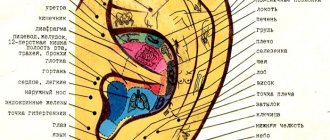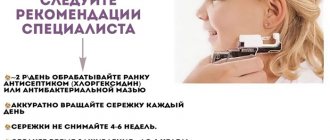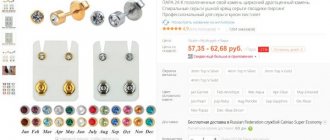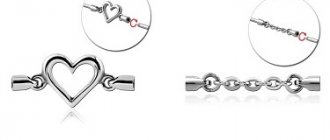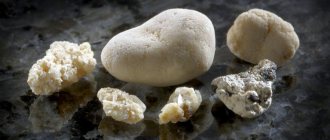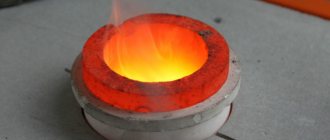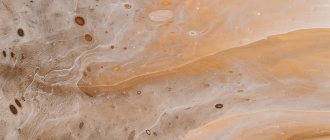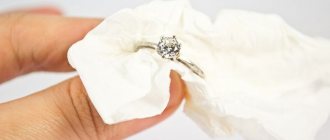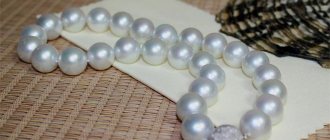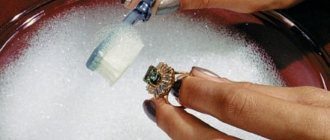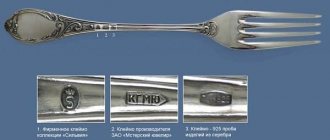Plan
- Types of ear cartilage piercings
- Which earring to choose?
- Stages of the procedure.
- What to do before piercing?
- Contraindications
- How does the process work?
- Caring for your piercing after the procedure
- What tools are used?
- How many days does it take to heal?
- Possible complications after piercing
- What problems might arise and why?
- Recommendations
- Range
- What's in fashion?
The history of ear cartilage piercing goes back centuries: before, every element of the image had meaning, now stylish hoop earrings are a beautiful, spectacular element of a holistic image. To obtain the result, a puncture is performed with a special instrument.
Interestingly, ear piercing is one of the oldest forms of body modification. This was done long before our era, which is confirmed by archaeological research. In the twentieth century, there was a real “boom” in piercing - regarding the piercing of the lobe, it was done by friends at each other’s homes. Gradually, this procedure is turning into a separate service from a medical specialist.
Cartilaginous piercing differs significantly from earlobe piercing - both in the procedure, the instruments used, the care, and the healing process. This type of puncture is painful and sometimes requires pain relief.
Types of ear cartilage piercings
- Helix is a type of piercing where the upper part of the shell at the helix is pierced, partially capturing the cartilage. The peculiarity of the procedure is that it is quite painless, since there are no nerve endings there.
You cannot select jewelry that is thick - if the earlobe stretches (for example, under tunnels), then the cartilage does not.
- Forward Helix is also a piercing of the cartilage part, but in the opposite place from the previous type. Usually several punctures are made here for miniature jewelry.
It should be taken into account that healing, in this case, is a long process - about 4 months.
- Industrial piercing is a type of puncture of the cartilage part, which requires 2 holes on the upper cartilage, with a barbell earring inserted between them. The most popular option: one hole in the front of the sink, near the head, the second - exactly at the opposite point.
Initially, it is not recommended to insert a steel earring; wear bioplastic jewelry for several months while the healing process takes place.
- Days piercing - a puncture is supposed to be made in one of the curls of the internal cartilage, performed from top to bottom. You can install half rings, rings, rods of a certain type. Sometimes several punctures are made. This type is universally suitable for both sexes.
After the puncture, the earring is immediately inserted; it should not be too thick so as not to cause discomfort. The healing process, depending on various factors, can last up to 8 months.
- Ruuk piercing is a puncture in the cartilage of the ear opposite the tragus on the protrusion. It is more difficult if the ear concha is naturally small, but this is not a limitation if this is the type of piercing you want. This is difficult only for the master. You also need to carefully and carefully select jewelry - not everything will suit. Consider your anatomical features and consult a professional.
- Orbital piercing is a type of double puncture. The peculiarity is that the ini connect the ring. The number of punctures may vary, but the procedure is not performed at once - it is carried out in stages so as not to cause discomfort and complications. Healing lasts up to 1 year.
The specialist does not just pierce, but before that he carefully calculates the distance between the holes, taking into account possible changes in the cartilage itself.
- Tragus piercing is a tragus piercing, the most elegant option, considered for women. A puncture is expected in the front of the shell. Miniature rings and carnations are suitable for it.
Immediately after the procedure, you need to be careful - do not sleep on the side of the puncture, and it is not advisable to use an earphone.
Types of keloid scars
There are 2 classifications of keloid scars: according to the reasons for their occurrence and according to the age of the scar.
1. Based on the reasons for their occurrence, colloidal scars are divided into 2 large groups:
- True or primary. They occur without the influence of external forces on the human skin. Most often, such formations are localized on the chest, neck, back and ears;
- False or secondary. They occur as a result of injuries, burns and skin diseases.
2. According to age, colloid type scars are:
- Young: They are brightly colored and have glossy skin. A young formation can be painful, and there is a tightening of the skin in the area of the scar. Lifespan from 3 months to 3 years.
- Old: They become pale, rough and knotty. Scar growth stops after a few years. Lifespan is from 3 to 5 years.
In most cases, a keloid scar appears after:
- skin burns;
- carrying out surgical interventions;
- skin injuries;
- insect bites;
- piercing;
- tattoo
Which earring to choose?
Initially, before piercing, decide on the thickness of the earring, since the hole in the cartilage does not stretch, as is the case with the earlobe.
- One of the most popular options is a barbell or barbell. The optimal solution for industrial punctures. Visually, it is a tube with clamps; it does not bend. The decor is varied - stones, thorns and other decorations.
- The ring is the standard type of earring for both cartilage and lobe. The circle is not closed; in place of the missing part there is an insert-ball or other decor.
- Labret is a decorated stick similar to a stud. The straight stick is bordered by discs on each edge.
- A circular is a horseshoe that ends with balls on both edges.
- Banana is an earring of a characteristic shape, with a twist on both ends - a ball or a cone.
System-75 system
For puncture we use the innovative American System-75 system. This is an improved “gun” for piercing the ears, navel and nose.
Advantages of the technique:
- Complete sterility. After one puncture in System-75, the cartridge and earring-needle are replaced.
- Quick puncture without frightening pops or sharp sounds.
- Almost painless.
- A “stud” type earring is immediately threaded into the hole (not punched through!), that is, the jewelry is simultaneously threaded into the ear along with the piercing without a sharp blow, as happens with a regular “pistol”.
- All materials for jewelry are hypoallergenic and do not oxidize (surgical steel or gold-plated steel).
- Puncture with optimal diameter. After healing, the “studs” can be easily changed to any other jewelry model.
- System-75 is a small and lightweight device. It is convenient for them to work as a specialist, and children are not afraid of him.
- The device allows for good aiming, which eliminates inaccuracy when piercing skin and cartilage.
- Suitable for piercing the ears of children of preschool age and even younger than one year!
- The gentle method shortens the rehabilitation period. The first earrings installed will have to be worn for 2 months, but the wounds will heal much faster.
Stages of the piercing procedure
- If there are no contraindications for the procedure, the specialist carries out training: the specialist examines the features of the ear; disinfecting the ear with alcohol; The puncture site is marked with a special marker. Some puncture sites are much more painful than others. Pain medication may be used.
- Fixation with a tool - using a clamp.
- The cartilage is manually pierced with a catheter needle - the needle is removed, leaving the catheter.
- Next, the previously disinfected jewelry is inserted into the catheter, and it is gradually pushed out by the earring.
- As a result, the catheter is removed from the stem and the ball is screwed onto the earring.
How to use the Studex piercing gun?
So, before us is a modern tool for quickly and painlessly piercing the earlobe. With its help, you can make as many holes as you like, immediately installing beautiful and elegant stud earrings without violating the sterility. Using Studex is very simple:
- Treat the site where the earring needle is supposed to be inserted with an antiseptic (alcohol, furatsilin).
- Use a special marker to mark the needle insertion site. If you are getting your ears pierced for the first time, make sure the points are symmetrical in the mirror.
- Place the earlobe or earlobe next to the cartridge and the outer plate.
- Press the trigger.
The procedure is completed! You will see a small earring in the earlobe. There is no need to fasten or adjust anything. You should not touch the earlobe with unwashed hands; it is advisable to do the manipulation using disposable latex gloves. You can simply wash your hands thoroughly immediately before the procedure.
Preparing for the piercing procedure
The puncture site is first examined by a specialist to assess the location of the vessels and the anatomical features of the ear.
The main point is that piercing the ear cartilage is painful, more difficult than piercing the earlobe. Before piercing, start with the lobe.
- First, the entire ear is disinfected - it is treated with 95% alcohol.
- The jewelry itself, which will be inserted immediately after the puncture, is disinfected: for this purpose, treatment is carried out in an autoclave (dry heat), which allows you to kill 99.9% of microbes. The disinfection process takes 15-30 minutes.
- A dot is placed at the puncture site with a special antiseptic marker, and anesthesia is administered.
Since the procedure is quite painful, local anesthesia is used: external, injection, or both. A special cream or spray is applied to the skin as an anesthetic, then an injection is given. Sometimes only external anesthesia is enough - it all depends on the puncture site and the client’s pain threshold.
Helix piercing
The name of the piercing comes from the English word Helix. A helix piercing means a piercing on the top of the ear or the helix of the ear. The hole created by puncturing the cartilage tissue is used to wear various types of jewelry.
Helix ear piercing
Helix piercing is popular among both women and men. Those who like to pierce the body can be found among people of different generations. You can choose any type of decoration to express yourself.
Contraindications
There are a number of features that do not allow ear cartilage piercing - primarily to protect against complex and dangerous consequences.
First of all, you cannot perform the puncture yourself, anywhere; it is dangerous to trust the procedure to just anyone - the process can have irreparable consequences if something is done incorrectly. Contact the professionals!
Before the procedure, the master pays attention to the anatomical and physiological features of the client’s ear. Sterile operating conditions are extremely important.
In some cases, a professional, a licensed master, will refuse to carry out the procedure. Grounds for refusal:
- Any blood disease;
- Pregnancy;
- The client has not reached the age of majority;
- Traumatic brain injury;
- The client has diabetes;
- Rheumatism, arthritis;
- The client came in sick (flu, ARVI).
What to choose?
With the same level of pain, the use of a needle is superior to a gun in terms of sterility and accuracy. It must be taken into account that the consequences of the procedures are different. After the needle, the wound heals quickly, the risk of damage to bioactive points is minimal, provided that the work is done by a professional. When pierced with a gun, they are not so precise; bleeding may occur, for example, when piercing the tongue.
The gun is designed to provide services in jewelry stores. In a salon, the level of service should exceed that of a store, so the use of a pistol should raise red flags.
Art of Pain studio masters perform piercings with a diamond-ground needle. The tool quickly cuts through tissue and forms a smooth channel without lacerations or tears. Such punctures heal quickly, without inflammation.
To get a safe piercing, we invite you to our studio in St. Petersburg. We guarantee a professional approach and sterility.
How does the process work?
The cartilage is specially illuminated with a lamp to determine the anatomical features and location of the vessels. Then preparatory work is carried out - disinfecting the ear with alcohol, placing a dot at the puncture site. To obtain a hole, a catheter needle of the required thickness is used. The earring is immediately inserted into the puncture.
There is no need to fear for your vision, hearing or other body functions. There is a stereotype that piercing carries a danger of damaging nerve endings. Large nerve branches cannot be damaged, so there is no need to fear for your health. Especially if you trust a professional.
What to do if your ear becomes inflamed after a piercing
When the cartilage at the puncture site becomes inflamed, you need to consult a doctor, but if this is not possible, you can try to negate the negative manifestations by using:
- antibiotic ointments - Streptomycin, Levomekol;
- antiviral drugs – Oxolinic ointment, Viferon, Interferon;
- healing agents – Zinc ointment;
- It is possible to apply mashed aloe leaf, baked onion, and tea tree oil.
Piercing the ear cartilage is a medical procedure that can have serious consequences if the professional is insufficiently professional or if there is inadequate care in the future. It is necessary to take into account that you will have to take care of the hole not only during the healing period, but also throughout the subsequent period. Cartilage piercing imposes certain restrictions on life, failure to comply with which entails serious consequences.
Caring for your piercing after the procedure
Healing after a cartilage piercing takes longer than with an earlobe piercing. To ensure that the process goes without any problems or complications, it is recommended to follow these recommendations:
- You should not touch the puncture site - this is important, since it is quite easy to get an infection.
- Healing occurs over the course of 4 weeks - those earrings that were inserted immediately after the piercing do not need to be removed during this time.
- For a certain time, baths and saunas are prohibited, for the same reason as in the first paragraph. For the first three days after the procedure, you should generally be extremely careful with water procedures. A categorical ban on swimming in natural bodies of water.
- You cannot move or twist the earring installed after the piercing - the more you irritate the puncture area, the more the fibrous tissue thickens.
- Prohibition of hot baths and showers - high-temperature water can cause bleeding.
- Be careful not to catch the piercing with hair or clothing.
- It is not recommended to sleep on the side in which the piercing was made - a person may twist in his sleep, and you will not notice how you injure the puncture area.
- The main point is that alcohol should not be used as an antiseptic, as it can cause tissue burns.
For quick healing and care, experts recommend special products, taking into account the type of piercing.
For the first 4 weeks, you need to regularly treat the puncture with an antiseptic - only in this case can and should you rotate the earring. This is necessary so that the product is evenly distributed throughout the channel, entry and exit points of the earring - everything must be thoroughly disinfected.
If you play sports, after taking a shower, you need to additionally treat the hole with an antiseptic.
If the puncture site, with proper care, becomes red, swollen, or painful, you should contact the specialist who performed the puncture as soon as possible.
Earlobe piercing
Tools: earlobe gun with an attachment corresponding to the size of the earring.
Earrings: sterile studs (needle earrings) with a clasp.
Treatment before the procedure: before marking, the earlobes are wiped with alcohol or Octenisept solution.
Place of puncture: in the center of the earlobe. Most often, the lobe is conventionally divided into 9 squares, and the puncture is made in the center of the middle square. The point is made with an aseptic marker.
Piercing technique: the pistol is “cocked” and the earring is “loaded” into it (the technique of this procedure is described in great detail in the instructions for the pistol). The gun has a free stroke, during which there is no click. This is necessary to fix the earlobe and bring the tip of the needle earring to the intended puncture point. If everything is ready and the point is at the tip of the needle, we overcome the resistance of the “trigger” and the gun fires.
The earring is fastened in the ear. Move downwards to remove the gun.
Care: The healing of the puncture and the formation of the channel takes 2 weeks, after which you can change the jewelry. It is recommended to apply chlorhexidine bigluconate to the puncture area and decoration 2-3 times a day for two weeks. The earring should be moved and rotated so that the solution gets onto the earring shaft and into the canal.
What tools are used?
In terms of the set of tools, ear cartilage piercing differs from earlobe piercing. The lobe is pierced with a special gun or needle. The hole can stretch, depending on the diameter of the decoration - there is no need to carefully select the diameter.
There are a little more problems with cartilage:
- Since it does not stretch, you must initially select the number of a special needle for a specific size.
- For a puncture, a catheter needle of a certain number is used - it indicates the size of the future hole.
- A window clamp, a clamp and a special ring release are also used.
The main tasks of the specialist who performs the piercing are to avoid two problems:
- Crushing of ear cartilage.
- Getting injured due to incorrect actions.
To avoid problems and injuries, piercing is performed manually with a needle, since the gun can crush the cartilage.
Features of care
After the procedure, the master gives recommendations for care so that the healing period passes quickly and without complications.
- You should avoid touching the puncture site.
- You cannot move the jewelry, especially if it is installed in cartilage - any injury provokes compaction of the fibrous tissue.
- It is not recommended to visit baths and saunas to prevent infection.
- Do not take hot baths as this may cause bleeding.
- Avoid accidental injury from hair contact.
Depending on the type of piercing, the master will recommend aftercare methods for quick recovery.
Possible complications
During the piercing process, the following problems are possible: crushing of the ear cartilage, injury, infection. What does this mean?
- Using a gun can crush the cartilage, so the piercing is performed with a sterile catheter needle.
- If crushing occurs, the cartilage may die and take a long time to heal.
- Even if healing occurs, scars and large holes that do not heal are possible. To avoid necrosis, you need not only to contact a professional, but also to regularly treat the puncture site.
- Another risk is associated with allergic reactions - this is not a common problem, but it is worth noting that the body may have an adverse reaction to some metals. It is recommended to use medical or jewelry style titanium as the first earring.
Features of cartilage puncture
Cartilage puncture is a painful and difficult procedure. Everyone can withstand discomfort, but such a wound can take six months to heal. The operation is performed only with a sterile needle. They refuse to use a gun: particles of blood and skin from the previous client get into the plates, which can lead to infection.
Also, this tool does not cope well with hard cartilage tissues and can cause them to fragment.
For such a puncture, jewelry with a thin rod must be used. This allows you to minimize trauma. In the area of the auricle, the craftsman can make a small cutout for the pin of the jewelry, which will shorten the healing time of the wound. Specialists are careful when choosing the puncture site. They scan the ear in advance and compare the resulting photo with a map of biologically active points. Thanks to this, the specialists find safe places to pierce. If the points are chosen incorrectly, the risk of infection increases and tissues take longer to heal.
The piercing is done on the front of the cartilage, above the opening of the ear.
What problems might arise and why?
First of all, the most dangerous factor is dirt, microbes, and mechanical damage. Contact with any dirty objects, microcracks can cause blood poisoning, purulent processes, and bleeding.
If you have had viral diseases (especially shortly before piercing), otitis media, or upper respiratory tract diseases, this may negatively affect the regeneration processes, and the healing process will take longer.
Constant mechanical influences and scars are a consequence of improper care. If you notice a slight deviation from the norm, immediately contact a specialist to understand the cause of the problem. In some cases, not only ordinary care is required, but also therapy with more serious methods.
The most common problem is inflammation. Causes:
- The earring is constantly removed, forgetting that this cannot be done for 4 weeks;
- Swimming in a river or lake is a sure step to introduce dirt and microorganisms into an unhealed puncture;
- Do not regularly treat the puncture site;
- The procedure was carried out incorrectly and by a non-professional.
Scarring, purulent inflammation, lumps, abscesses, compactions are signs not only of low hygiene, but also of low immunity and previous infectious diseases. In rare cases, rejection is, on the contrary, a sign of a high level of immunity.
If any abnormal sign appears, you should immediately contact a specialist. You may need medication to help you recover quickly.
Clinical case
Patient. 31 year. In March 2021, I contacted an ENT doctor with complaints about formations on the left earlobe. According to the patient: 5 years ago, after the left earlobe was pierced again, discomfort and tingling appeared. A month later, I began to notice thickening and discoloration of the skin of the left earlobe. There were attempts to remove the keloid scar (removed twice), without positive dynamics. For 3 months, a course of conservative therapy was carried out according to the generally accepted algorithm, and on June 13, 2020, the keloid scar of the left earlobe was removed using a minimally invasive method - radio wave surgery.
Fig. 1. Photo before conservative therapy - we can see active proliferation (active process of scar hypertrophy) by the color and shape of the scar. During this period you cannot operate. Photo after conservative therapy, as a preparatory stage for surgical treatment. The photo shows a change in the color and size of the scar, which indicates the completion of active proliferation of the scar and the possibility of surgical treatment.
Fig. 2. Photo immediately after removal of the keloid scar.
Recommendations
- There is no need to start piercing your ears with cartilage; first, try experimenting with the lobe - the procedure is less painful and heals quickly (up to 1.5 months).
- Do you want some punctures? There is no need to do several operations at once - this is a painful process.
- It is imperative to carefully care for the puncture itself, especially during the first year.
- Don’t forget that cartilage takes longer to heal and the procedure itself is painful.
- Tell your doctor right away if you are allergic to certain metals. It is advisable to find out if you have allergies before the procedure.
- Maintain hygiene - treat the hole 2-4 times a day, always after a shower or sports activities.
- Wear your headphones carefully; it is better to use wireless ones.
- Before processing the canal and the edges of the hole, be sure to thoroughly wash your hands and treat them with an antiseptic. A saline solution is suitable for treating the canal.
How to properly pierce?
It all depends on what tool the master is working with. But a real specialist will always offer you a needle piercing. This scares many, but in fact, a qualified master will do everything quickly and practically painlessly (real pain will appear later). The needle has several advantages: it passes between tissues without tearing them (healing is faster); you have no risk of contracting any disease (the gun cannot be disassembled and completely sterilized), the puncture with a needle will be smoother.
Piercers recommend doing no more than three punctures at a time.
Range
Freak Boutique offers high-quality and stylish earrings for ear cartilage piercing - made of steel, titanium, brass, with or without stones.
- Ring made of surgical steel with a minimalist cross - without unnecessary decoration or stones. The material is safe for humans, does not cause irritation, and is not subject to corrosion. Ring thickness – 1.6 mm.
Surgical or jewelry steel is popular in jewelry making because it is quite durable, hypoallergenic, relatively inexpensive, and hygienic. The surface has no pores, so harmful microbes can only be on the surface, and it can be easily disinfected. The necessary properties of the alloy are given by its components - nickel, molybdenum, chromium.
- Ring with a diameter of 8 mm made of black surgical steel with a flat insert. Easy to secure using a release mechanism.
- Ring with a release mechanism made of surgical steel. Thin – thickness 1.2 mm, diameter – 8 mm. The main feature is the presence of an insert with white opal. The stone shimmers with blue and pink highlights.
A similar option is a ring with an amethyst. On the miniature insert is a light purple stone. The diameter is slightly larger than the previous version - 1 cm.
- Titanium ring 1.2 mm thick for ear cartilage. The highlight is a rounded insert with an opal of a rich, bright blue color.
Titanium is considered the metal of the future, due to its properties, it is more often used for jewelry because it is: relatively inexpensive, durable, looks beautiful, lightweight, hypoallergenic.
- Ring made of surgical steel with a ball-shaped insert. Anodized metal gets an unusual look - the surface is multi-colored, iridescent. The diameter of the product is 1.1 cm.
A similar option - without a ball insert, a regular smooth titanium ring.
- Clicker ring made of high quality 925 sterling silver, expandable type. Recommended for the nose, but also suitable for the ear.
The labret is made of titanium – a durable, hypoallergenic metal. Suitable for punctures at different points of the ear cartilage. The main highlight is the decoration with opal stone (turquoise, pink, lilac-white, blue-green). The fixation labret is equipped with an internal thread.
Labrets made of jewelry or surgical steel without stones are an excellent option as a first piece of jewelry. Several size options available.
Circulars are often used for both the septum and the ears. This horseshoe model is made of surgical steel, in black color. At the ends there are cones-spikes.
Industrial bars are one of the most spectacular decorations, especially for punk and cyberpunk styles. A wide selection of bar inserts are available, which serve as decoration: with symbols, with stone inserts, with a chain. There are also removable barbell decorations.
Possible complications and consequences
Piercing the ear cartilage is not a harmless procedure and can have serious complications if the piercing technique is incorrect or if the rules for caring for the hole are violated. There are a significant number of complications that can arise after a violation of the integrity of the cartilage tissue of the auricle:
- Infection and subsequent inflammation of the tissues of the auricle.
- Bleeding that can occur due to clotting disorders.
- The development of an allergic reaction to the material from which the jewelry is made.
- The formation of a keloid scar, which is a consequence of the proliferation of connective tissues.
- Deformation of the ear concha due to damage to the integrity of the cartilage during manipulation is a common complication when trying to pierce the cartilage with a pistol.
It is not uncommon for the ear to swell after a cartilage puncture - if the swelling subsides during the first 2-5 days, then the worries are groundless, but when the swelling persists or increases, you should immediately consult a doctor.
The puncture became inflamed
Infection and subsequent inflammation of a cartilage puncture develops not only due to non-compliance with sterility rules during the puncture or care after the manipulation. Complications can also occur on punctures that have healed a long time ago. There are several reasons why an old puncture becomes inflamed:
- hypothermia;
- injury to the hole due to careless handling;
- infection due to swimming in a polluted body of water;
- failure to comply with disinfection conditions when replacing jewelry;
- due to decreased immunity, a previously acquired infection develops;
- allergic reaction to the metal of new jewelry.
Signs of the inflammatory process of cartilage puncture are the following:
- redness and the appearance of a vascular pattern around the piercing;
- acute pain when touched;
- dull, less often throbbing, pain of a constant nature;
- swelling of the puncture area;
- discharge of an unpleasant odor with inclusions of blood and pus;
- the appearance of a lump around or next to the hole.
When the ear is swollen after a cartilage puncture, if the initial symptoms of infection are ignored, the person may develop a feverish condition. With it, there may be an increase in temperature, up to 39 °C, as well as accompanying manifestations in the form of chills, body aches, increased sweating and decreased performance.
Types of punctures in the cartilaginous part of the ear
The advantage of cartilage piercing is the variety of choices: both jewelry and piercing methods. At the same time, you can combine different types of piercings on one ear, thereby making the image even more original.
The following types of cartilage piercings can be done in salons:
- antitragus - the decoration is fixed on the cartilage located slightly above the lobe;
- day - the earring is fixed above the ear canal;
- industrial - a long barbell earring is threaded through two punctures in the upper part of the ear;
- conch - puncture is carried out near the ear canal;
- orbital - two punctures are made for it: on the cartilage and on the face, both earrings are connected using a chain;
- oricle - piercing of two closely spaced earrings on the outer side of the ear;
- arm - the most common piercing is in the inner part of the cartilage in the middle of the shell;
- snag – a through horizontal puncture of the ear curl;
- tragus - a puncture of the smallest cartilage above the earlobe;
- helix – fixation of one or more earrings (double, triple helix) on the outer ear cartilage.
An ear piercing in the cartilage can be multiple, when several piercings are located close together in one area. Modern jewelry has designs that allow you to realize quite daring fantasies.
When choosing a type, you need to focus not only on fashion, but also on the shape of the auricle, which is unique for each person.
How is this piercing done?
The basis for successful piercing is the right choice of the master. You should read reviews about the salon and the level of professionalism of the craftsmen in advance. The best option would be to have the puncture procedure performed by a master with a medical education.
Beauty salons that value their reputation provide piercing services in accordance with all hygiene standards. The office must have a disinfection system, medical personnel are equipped with special clothing and sterile self-defense equipment (masks and gloves) for carrying out simple surgical procedures.
The seemingly simple procedure of cartilage puncture has a number of consequences that must be foreseen in advance. There are 2 ways to pierce the ear helix. 1st method - puncture with a pistol. 2nd method - needle with catheter.
In modern salons, the practice of piercing the ear with a gun has long faded into the background, since this procedure has serious side effects and can cause infection with serious diseases. Pistol piercing destroys cartilage, which leads to inflammation and prolonged healing.
The safest is to pierce the ear with a special needle and catheter. A sharp needle allows you to make a hole of the required diameter and painlessly insert the labret into the puncture.
